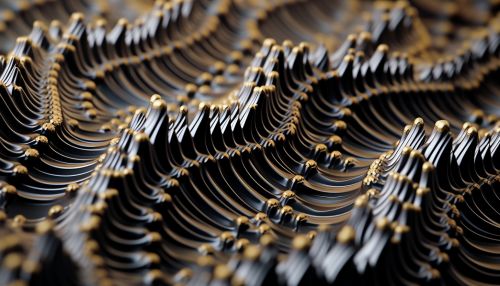The Science of Ferrofluids and Their Applications
Introduction
Ferrofluids are a fascinating class of materials that have intrigued scientists and engineers for decades due to their unique properties and wide-ranging applications. A ferrofluid is a type of colloidal suspension, which is composed of nanoscale ferromagnetic, or ferrimagnetic, particles suspended in a carrier fluid, usually an organic solvent or water. The particles, which have an average size of about 10 nanometers, are coated with a surfactant to prevent their agglomeration (clumping together). When subjected to a magnetic field, the nanoparticles form regular patterns of peaks and valleys.


Physical and Chemical Properties
The physical and chemical properties of ferrofluids are primarily determined by the size and composition of the magnetic nanoparticles and the type of carrier fluid used. The nanoparticles are typically made from materials such as magnetite, hematite, or some other type of iron oxide. The carrier fluid can be an organic solvent, water, or even a biological fluid. The surfactant used to coat the nanoparticles is typically a long-chain fatty acid, such as oleic acid.
The most notable property of a ferrofluid is its magnetism. When no external magnetic field is present, a ferrofluid behaves like a normal liquid. However, when an external magnetic field is applied, the ferrofluid quickly becomes magnetized and forms a regular pattern of peaks and valleys that aligns with the direction of the magnetic field. This phenomenon is known as the normal-field instability.
Another important property of ferrofluids is their viscosity. The viscosity of a ferrofluid can be significantly altered by changing the strength of the applied magnetic field. This property makes ferrofluids ideal for use in a variety of damping and sealing applications.
Synthesis of Ferrofluids
There are several methods for synthesizing ferrofluids, but the most common method is the co-precipitation of iron salts. In this process, iron salts, such as iron(II) chloride and iron(III) chloride, are dissolved in water and then mixed with a base, such as sodium hydroxide. This causes the iron salts to precipitate out of solution as iron oxide nanoparticles. The nanoparticles are then coated with a surfactant to prevent them from clumping together.
Applications of Ferrofluids
Ferrofluids have a wide range of applications in various fields, including electronics, mechanical engineering, medicine, and materials science. Some of the most notable applications of ferrofluids are discussed below.
Electronics
In electronics, ferrofluids are used in the cooling and damping of loudspeakers. The ferrofluid is placed in the magnetic gap of a loudspeaker, where it helps to dissipate heat generated by the voice coil and dampen the movement of the cone, improving the speaker's performance.
Mechanical Engineering
In mechanical engineering, ferrofluids are used in seals for rotating shafts. The ferrofluid is held in place by a magnetic field, forming a liquid seal that can prevent the leakage of gas or liquid along the shaft.
Medicine
In medicine, ferrofluids are being explored for use in targeted drug delivery and magnetic hyperthermia treatment for cancer. In targeted drug delivery, drugs are attached to the nanoparticles in the ferrofluid, which can then be directed to a specific location in the body using a magnetic field. In magnetic hyperthermia, the ferrofluid is injected into a tumor and then heated using a magnetic field, causing the cancer cells to die from the heat.
Materials Science
In materials science, ferrofluids are used in the synthesis of magnetic nanoparticles and the fabrication of magnetic composites. They are also used in the study of nanoscale magnetic phenomena.
Future Directions
The field of ferrofluid research is still very much in its infancy, and there are many exciting directions for future research. Some potential areas of exploration include the development of new types of ferrofluids with improved properties, the design of advanced ferrofluid-based devices, and the exploration of novel applications of ferrofluids in areas such as energy storage, environmental remediation, and biotechnology.
